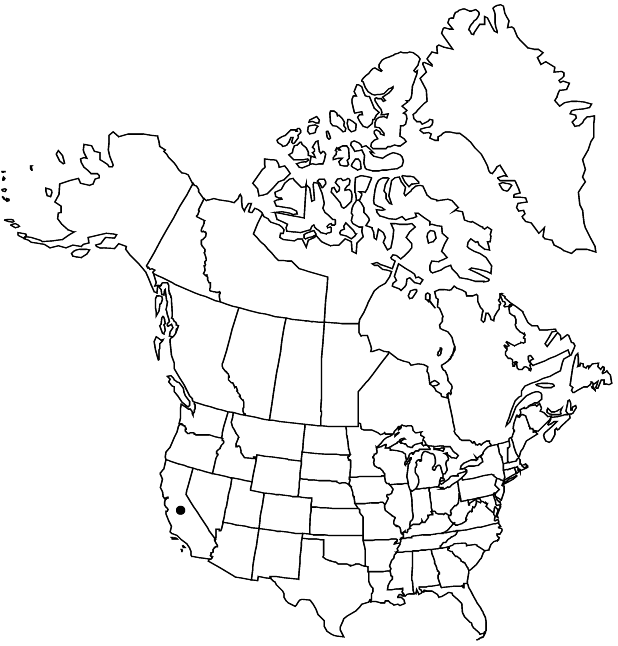Difference between revisions of "Dudleya cymosa subsp. marcescens"
Madroño 14: 106, fig. 1. 1957,.
FNA>Volume Importer |
FNA>Volume Importer |
||
| Line 10: | Line 10: | ||
|name=Dudleya marcescens | |name=Dudleya marcescens | ||
|authority=(Moran) P. H. Thomson | |authority=(Moran) P. H. Thomson | ||
| + | |rank=species | ||
}} | }} | ||
|hierarchy=Crassulaceae;Dudleya;Dudleya subg. Dudleya;Dudleya cymosa;Dudleya cymosa subsp. marcescens | |hierarchy=Crassulaceae;Dudleya;Dudleya subg. Dudleya;Dudleya cymosa;Dudleya cymosa subsp. marcescens | ||
| Line 26: | Line 27: | ||
|distribution=Calif. | |distribution=Calif. | ||
|discussion=<p>Of conservation concern.</p><!-- | |discussion=<p>Of conservation concern.</p><!-- | ||
| − | --><p>Subspecies marcescens is known from the Santa Monica Mountains, Ventura and Los Angeles counties; it is considered fairly threatened (California Native Plant Society, http://cnps.web.aplus.net/cgi-bin/inv/inventory.cgi). This is the most distinct and distinctive of the subspecies of <i>Dudleya cymosa</i>, very different from < | + | --><p>Subspecies marcescens is known from the Santa Monica Mountains, Ventura and Los Angeles counties; it is considered fairly threatened (California Native Plant Society, http://cnps.web.aplus.net/cgi-bin/inv/inventory.cgi). This is the most distinct and distinctive of the subspecies of <i>Dudleya cymosa</i>, very different from <i></i>subsp.<i> cymosa</i> but more or less connected by <i></i>subsp.<i> ovatifolia</i>, also in the Santa Monica Mountains. It differs in its slender caudex, small leaves, and few flowers, and is one of only two members of subg. <i>Dudleya</i> whose leaves wither in early summer and are not replaced until after the first rains, often in late fall. The other is <i>D. parva</i>, growing some 13 kilometers to the north. In habit, they resemble subg. Hasseanthus, which differs in its slow-growing underground stems with crowded leaves and its open flowers. As noted by M. Dodero (1996), these two also are paedomorphic forms.</p> |
|tables= | |tables= | ||
|references= | |references= | ||
| Line 35: | Line 36: | ||
-->{{#Taxon: | -->{{#Taxon: | ||
name=Dudleya cymosa subsp. marcescens | name=Dudleya cymosa subsp. marcescens | ||
| − | |||
|authority=Moran | |authority=Moran | ||
|rank=subspecies | |rank=subspecies | ||
| Line 50: | Line 50: | ||
|publication year= | |publication year= | ||
|special status= | |special status= | ||
| − | |source xml=https://jpend@bitbucket.org/aafc-mbb/fna-data-curation.git/src/ | + | |source xml=https://jpend@bitbucket.org/aafc-mbb/fna-data-curation.git/src/f50eec43f223ca0e34566be0b046453a0960e173/coarse_grained_fna_xml/V8/V8_364.xml |
|genus=Dudleya | |genus=Dudleya | ||
|subgenus=Dudleya subg. Dudleya | |subgenus=Dudleya subg. Dudleya | ||
Revision as of 23:27, 16 December 2019
Caudices often branching, 0.2–0.7 cm diam. Leaves withering in summer; rosettes 8–15-leaved; blade green, oblanceolate, 1.5–3(–5) × 0.5–1.5 cm, apex acute to subobtuse, surfaces not farinose, glaucous. Inflorescences: floral shoots 5–15-leaved, 4–10 cm; cincinni 1–2, (1–)3–5-flowered, 1–4 cm. Petals bright yellow, often marked with red, 10–14 × 2.5–3.5 mm. 2n = 34.
Phenology: Flowering spring.
Habitat: With moss and lichens in very thin soil on sheer north-facing cliffs
Elevation: 300-400 m
Discussion
Of conservation concern.
Subspecies marcescens is known from the Santa Monica Mountains, Ventura and Los Angeles counties; it is considered fairly threatened (California Native Plant Society, http://cnps.web.aplus.net/cgi-bin/inv/inventory.cgi). This is the most distinct and distinctive of the subspecies of Dudleya cymosa, very different from subsp. cymosa but more or less connected by subsp. ovatifolia, also in the Santa Monica Mountains. It differs in its slender caudex, small leaves, and few flowers, and is one of only two members of subg. Dudleya whose leaves wither in early summer and are not replaced until after the first rains, often in late fall. The other is D. parva, growing some 13 kilometers to the north. In habit, they resemble subg. Hasseanthus, which differs in its slow-growing underground stems with crowded leaves and its open flowers. As noted by M. Dodero (1996), these two also are paedomorphic forms.
Selected References
None.
